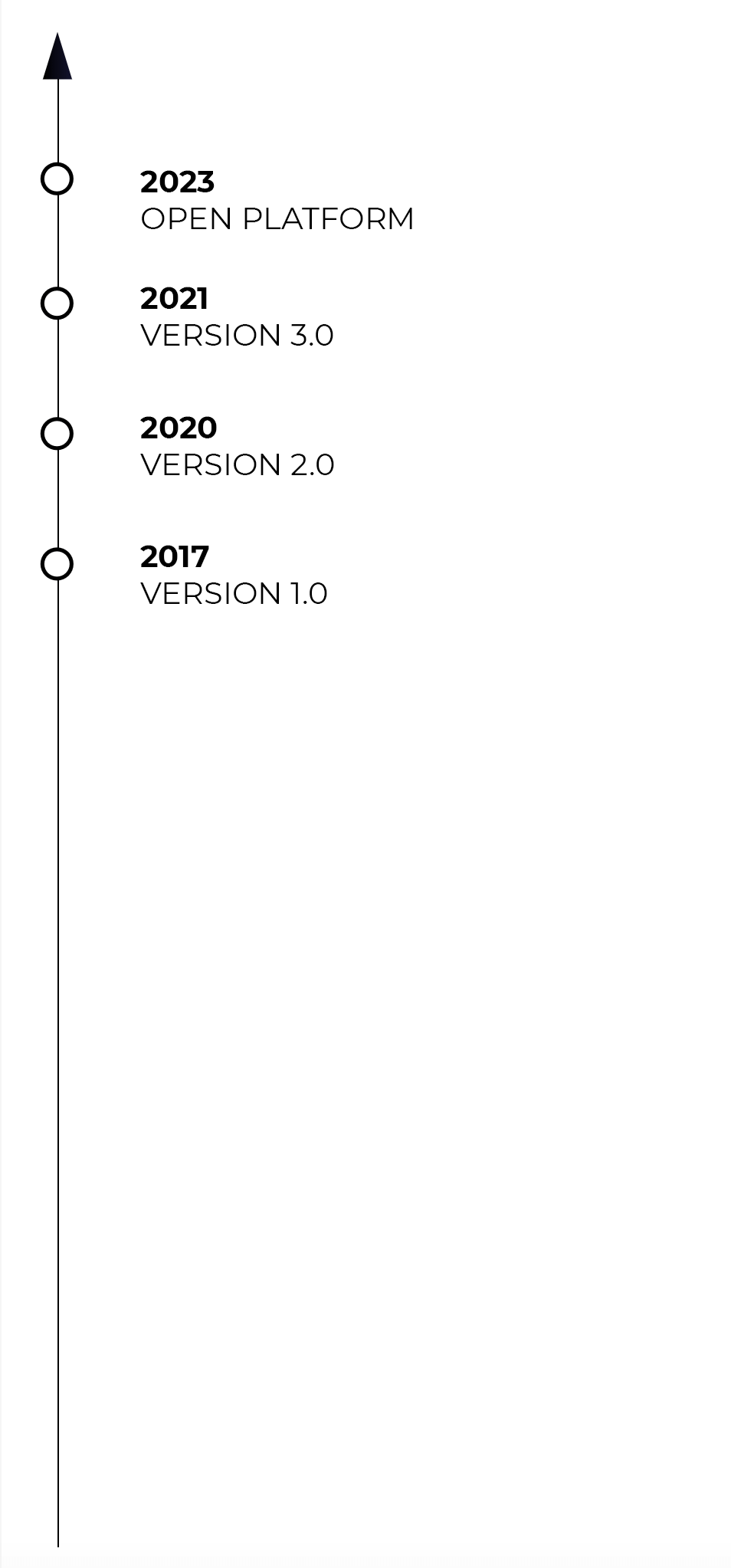Billon Unified Blockchain
A multi-tenant, permissioned blockchain built for sovereign identity, and to be high-performance and regulatory compliant for all asset classes:
DOCUMENTS AND DATA
NATIONAL CURRENCY
NON-CASH TOKENS
TIMELINE

In 2023, we created the Open Platform, with the world's first feature: on-chain documents. It is based on the NextGen protocol, which was released with version 2.0 introducing 100% secured currencies directly on the ledger. Our team of engineers started designing the protocol as early as 2012 and since 2017 and it has been commercially available. We minted the first British pound on the blockchain in August 2017, when we received UK regulatory approval. Our enterprise clients are challenging us a lot to adapt our solutions to their needs which leads us to more new research and development initiatives. Because we control the entire stack, our release cycle involves making major changes once a year, combining smaller changes into quarterly updates.
OUR CAPABILITIES
Driving Innovation: Three Categories of Use Cases supported by Billon's underlying protocol:
TRUSTED
DOCUMENT & DATA
For documents, blockchain plays multiple roles. It can either secure an immutable high-value document for a long-time, or enable the sharing of documents from multiple entities, or capture the attestation and validation of documents, linked to a traceable identity.
DIGITAL
CASH
Regulated digital cash is national currency transformed into e-money assets using a new form of DLT technology. It is explicitly designed to meet the performance and regulatory needs of “true cash” national currency and enables a range of peer-to-peer and low-cost account management use cases.
REAL ASSET
TOKENIZATION
Ownership of non-cash real world assets is proven today by documents which are easy to forge. Securing assets with Non-Fungible Tokens (NFTs) and linking these to a verified identity for real-world marketplaces offers an innovative solution to this problem.
OUR DISTRIBUTED LEDGER
Our permissioned and multi-tenant ledger went beyond the fundamental elements of blockchain (e.g., immutability, distributed processing) and re-engineered most elements to solve for the two main challenges: regulatory compliance and performance.
A Scalable, Distribited Architecture
Our permissioned ledger consists of user nodes, corporate nodes, and privileged minting nodes. This is no central authority, no notarial validator, and no single point-of-failure. The network is self-organised and every node helps to maintain data integrity. The minting nodes form the anchors of our multi-owner ledger and this is a multi-issuer architecture.
Node structures are heterogeneous with the smallest nodes being small enough to run on phones, PC’s, IOT devices, and of course, servers. Code libraries allow nodes to integrated into native apps for Android, iOS, Linux and Windows.
The platform is open to any client, and clients can geo-ringfence their data.
Consensus mechanism
Our consensus mechanism uses zero-knowledge, proof-of-stake with algorithms designed to utilize a set of trusted nodes which we call a cooperative proof-of-stake consensus. While the ledger operates on any cloud environment without the need for additional power, the protocol also allows user nodes and mobile devices to add processing capacity to the ledger, resulting in a far more distributed architecture than many early blockchains.
The performance of our DLT has been doubling every 18 months. Recent independent tests confirm 160 million money transactions possible per day and over 5 million documents published each day. As the size of the network grows, throughput will grow as well.
Multiple interconnected blockchains
We are a graph of blockchains with:
- Cooperative consensus
- Client-side encryption
- Individual key for every record of information
- Distributed cooperative transaction verification
Ledger data structure (privacy)
Critical assets, such as financial assets, key documents, and security keys are stored on-chain to increase efficiency and security by eliminating off-chain structures.
Privacy is a feature of the ledger, with all data hidden from the operators of the ledger. Through client-side encryption and innovative and sophisticated programming, the need for hardware-based key management (and the risk of loss should such hardware fail) has been eliminated.
Heterogeneous Node Structure
The purpose and functionality of each node can be tailored to its use case, ranging from the most sophisticated publishing nodes to light nodes that perform only the reading of user-specific data.
Libraries allow for mobile devices to become part of the ledger, with data exchange between a mobile device and the rest of the ledger to be fully encrypted and structured as deep link APIs, if needed.
Embedded Business Logic (& compliance)
On-chain smart contracts, or embedded business logic, is specified by publishers and performs vital compliance roles for transactions involving monetary assets where KYC and AML regulations must be implemented.
For documents and data, embedded business logic provides for task triggers and to execute scripts, formula, and conditional algorithms as specified by the node owner for a particular use case, but always in a permissioned context.
Identity Management
The platform supports both self-sovereign and sovereign identity constructs and links real-world identification to ledger identities in such a way that identities can evolve over time.
COST ADVANTAGES
Our unique architecture with “on chain” documents storage and security model for digital identity protection allows various critical documents containing sensitive information to be efficiently processed in completely secure and unalterable manner.
ENERGY EFFICIENCY
TOTAL COST TO SERVE
Modular platform approach
First generation blockchain gave you only low level language constructcs making it extremely tedious and expensive to actually develop real life applications. We give you pre-developed modules that can rapidly customize with a small team to fit your needs.
DOCUMENTATION
Independent tests find Billon Unified Enterprise DLT System 60% more energy efficient and 2.5x faster than enterprise Ethereum